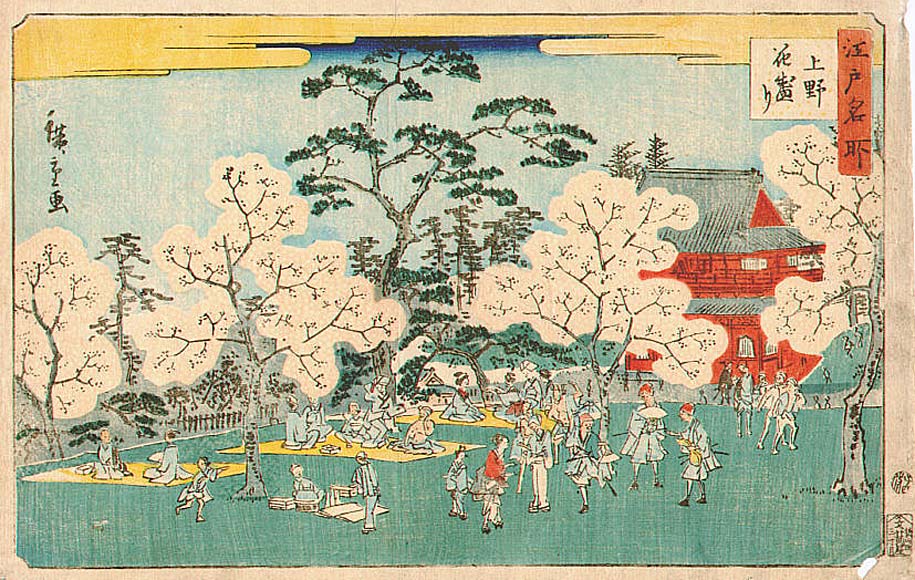by Patrick Trombly
Haiku is brief – deceitfully so to the casual reader. While most good poetry is efficient, Haiku is denser, even more compact than almost any other form. Its 17 syllables are meant to call forth deep and/or prolonged reflection.
Haiku is a traditional Japanese form of poetry. Japanese masters of the form included Matsuo Basho (1644-94), Taneguchi Buson (1715-83), Kobayshi Issa (1763-1827) and Masoaka Shiki (1866-1902).
Originally, it contained three meters, comprising a total of 17 on (or morae), which are nearly but not exactly equivalent, respectively, to lines and syllables in English. Because of the language differences, the 5-7-5 format is no longer universally seen as required in Western haiku. What is more important are the elements of the form that follow the poem’s function.
The function of Haiku is to make an observation in simple language, concerning the natural world – an observation that also serves as a pause, to allow our minds to make a leap to more profound reflection about ourselves, our consciousness and our relationship to the natural world that is the initial subject of the poem.
Form follows function here. The initial subject is transitory but full of meaning, building to what is referred to as satori or the “aha” moment. Typically, the poem includes a “cutting word” or “pivot word” that turns the movement of the poem in some way – on paper, generally the grammar shifts on this word; the meaning also shifts: typically the “aha moment” is introduced. Haiku also traditionally includes a seasonal word, or kigo, or at least a seasonal reference (i.e., the poem may describe a natural event that clearly evokes a particular season, e.g., snowfall or snowmelt).
As you can see, just in form alone there is much more than a 17-syllable nature poem!
Style is also important. In addition to compactness in structure, the style is also concrete. Language is simple and direct, not overtly ambiguous. According to Robert Haas, author of The Essential Haiku, the poem does not simply describe a natural event; it conveys a sense of having experienced it.
The most famous Haiku is by Basho. It has been translated countless times – our example was translated by Donald Keene:
ancient pond
a frog leaps in
the sound of water
The form is invitingly simple. We can all imagine ourselves sitting before a small pond, admiring its smooth surface, meditating in the silence of a summer afternoon. Then a single, natural act of a small animal, a frog, breaks the silence, breaks our meditation, flooding our thoughts. As D.T. Suzuki explained “not only was the totality of the environment absorbed in the sound and vanished into it, but Basho himself was altogether effaced from his consciousness.”
Beginning with Basho, Haiku is deeply influenced by Zen philosophy, particularly the notion of temporary enlightenment recognized in all things, including the small things, around us. Tranquility, peace of mind, must be first achieved so that one might glean meaning from these sources. In keeping with this Zen outlook, Haiku differs from other poetic forms in that every word conveys an experience, a meaning. Each word or phrase is its own natural formation, its own boulder on a mountain path, rather than a brick in a wall as is the case in a sonnet.
I would therefore invite participants to use the comment section more than has been the case in prior seasonal haiku blogs in this series, to explore the meaning(s) of the poem itself. I invite participants to consider themes ancient, modern and timeless.
For example, the following is influenced by Basho’s pond poem:
garden window
tree-swallow perched on bare branch –
birdsong
As a 17th century Japanese Buddhist might walk deep into the woods to sit by an old pond, a 21st century Bostonian might sit in a window overlooking the garden. This may take place in late Winter or early Spring – the garden is still silent and the viewer contemplates its simplicity. But this is also a reflection on the changes to our relationship with nature since Basho’s time. We often experience it in such a suburban setting that we possess and control; this is conveyed not only by the window but the garden itself.
Suddenly a tree-swallow, one of the first migratory birds to return (seasonal reference, as is the bare branch), enters. Though we have designed and built our controlled version of nature, and framed it in our window, the immediate feature is a natural one that pre-dates our involvement – the seasonal return of a migratory bird. The silence is broken and the “aha” lesson resonates: nature is all around us, not contained by us, and transcends us. And that message is beautiful to us.
It can also be a reminder for our relationships: how much more do we appreciate the free tree-swallow that leaves us but returns to herald Spring than we might appreciate a captive in a cage?
News & Notices
Contact
Poetry Archive
Author Archive
- Alan Summers
- Andromeda Jazmon
- Angeliki Korre
- Ashi
- Beatrice van de Vis
- Bubba
- cdron97
- Chewy
- Crafty Green Poet
- Damien Gabriels
- David
- Dennis Tomlinson
- diana l.
- Gerald England
- gillena cox
- Isabel
- J. Andrew Lockhart
- jem
- Jim Tantillo
- john mcdonald
- Kelly Shepherd
- Ken Wagner
- Lightfoot
- Lirone
- Liza Lee Miller
- Lulubelle B
- Mandy Smith
- Martha McLemore
- martin gottlieb cohen
- Megan Arkenberg
- Melanie Bishop
- Michele F
- Möme
- MysticGameKeeper
- Nora Wood
- Pamela A. Babusci
- Patrick Trombly
- Paul Smith
- Phill Deason
- Poet-in-Residence Gwilym Williams
- Pratibha
- R.K.Singh
- Rachel Green
- Reihaisha
- RKSingh
- sandy lawrence (four winds)
- Sarvananda
- Scramble
- Shelley
- Steve
- Strecker
- Tumblewords
- Vic Gendrano
- Yansidara


